|
90/100 (9.0 out of 10)
The False Queen by Tuula Pere is an imaginative, fantastical tale by prolific children's author Tuula Pere! This full-length middle-grade children's novel covers such topics as genuineness versus superficiality, friendship, forgiveness, and imagination. The book follows Viola, a spunky little fairy who arrives on a mysterious island known as Swing Island, wearing a crown on her head, she is mistaken by the locals as a queen from a foreign land sent to right the wrongs on the island. Rather than dismissing this, Viola goes along with this façade and plays along, pretending to be a great and wise queen. She gives legs (and wings) to the adage “fake it 'til you make it” by doing such things as making clothes and decorations out of spare materials lying around like tablecloths. However, it's only a matter of time before the people find out who she really is... Some other interesting characters to follow are Daniel, basically the Heimdall of Swing Island with a side hobby for play writing, and Selma, Viola's servant and loyal friend. This book is actually full of really lovable, likable characters. Interesting enough, even Viola remains a likable protagonist despite her mild mischievousness. Who doesn't wish they could venture into a new land where they'd be treated like royalty, adored, and admired? However, this book is quick to remind readers that lies and deceptions can only take you so far. Time will always tell. The truth will always come out in the end. That's why it's so important to be truthful, transparent, and honest, especially to yourself. Who are you when the mask and the crown come off? That's what matters. This book does have many real-world applications in teaching children to be honest and truthful. In an Instagram and social media laden world, it's also a powerful reminder for readers to be true to who they are and genuine rather than following for the fakeness and artificiality of supposed millionaires and supermodels online. You are beautiful, great, and wonderful just the way you are, and there's no need to change who you are just to fit the ideal. That's a powerful message for kids and adults alike. In the context of all these other children's books we've read this season, it's interesting to note that this book has many of the same themes and vibes as Dragon's Breath. In that book, a female dragon comes through a kingdom, receiving a lot of positive attention by spreading false hope and lies surrounding her presence. The dragon, unlike Viola, does prove to be malevolent while not entirely evil, allowing her jealousy to drive her to ruin the crops of the kingdom with her breath. Viola, on the other hand, never commits an act that destructive and wicked, however, she's a similar character in her insecurities and desire for attention even if it means deceiving people. It's interesting to note that while the dragon in Dragon's Breath had quite a disappointing and abrupt ending in just leaving the situation, Viola at least is given a chance to learn from her mistakes and atone for them. All in all, this is a worthwhile read in the middle-grade children's category! Check it out on Amazon!
0 Comments
Score: 95/100 (9.5 out of 10)
Snowphie by Howie Groff is a beautiful, happy, lighthearted children's book about the journey of a little snowflake and his goose friend. This is the perfect little winter and Christmas book to read to your preschool classroom or to your children at bedtime. First of all, we wanted to commend the style and the illustrations. The illustrations by Olya Bond have a unique character and quality of their own. They're beautiful in their own right. And this doesn't just include the art of the characters and the background, the text is textured in a really pretty and appealing way. There was never a time we looked at a page in this book and said, “that looks bad” or “that looks uninteresting.” Everything in this book looks inviting and everything in this book looks interesting. This book really has a charm of its own. It just pulls you in and gives you a nice, gentle hug. Another thing that's great about this book is the playful use of rhymes. Kids just love rhymes. They eat them up. It is always a little frustrating when, for whatever reason, children's authors resist using them. Instead, they go on long, complex diatribes about things that kids will probably not care about. Kids don't typically have the patience and attention-span for those things. This book doesn't have any of those problems. The language is colorful, fun, and rhythmic. Like a ball, it bounces here and there. Snowphie is a physical for what she's intended to be: a feather in the wind. She is cute, adorable, and lovable. Young readers will adore her. Although she lacks a significant degree of physical agency, her influence comes from her charisma. Her kindness is infectious, and she is even able to wrangle in a prodigal, rogue goose who seems to find new life and purpose in befriending and helping Snowphie. The two venture around, trying to find their place in the sun. Goose proves to be a kind and considerate friend who even warns Snowphie that his journey and destination could be dangerous for her because of the increased heat. This is a really lovely book that matches the quality of some of other great books we've seen, including Fixing Nick by this same amazing children's author. Check it out on Amazon! Score: 96/100 (9.6 out of 10)
Anyone who has followed our reviews for any amount of time knows that 9.6 is the highest score we've ever given a book. They might also know that this score is especially rare for fiction books with less than a handful of fiction books achieving the score. Well, Justifiable Deceit rightfully joins this elite and exclusive collection of books—the best of the best. For starters, this book arguably has the best, most suspenseful opening we have ever read as a young student, Tierra, seeks shelter from a mass-shooter, and we aren't immediately given relief or a reprieve. In fact, the author and the plot leave us hanging, not clear about what happened or how Terra survived. In fact, the whole book surrounds the mystery behind how Terra survived the mass shooting while 66 of her classmates didn't, the mystery behind the shooter (18-year-old Caleb Pratt), and—perhaps most importantly—the socio-political repercussions of the shooting. 10 years after the deadliest school shooting in the nation's history, America is on edge with the escalation of more mass shootings. One of the survivors of the Brockhampton High School shooting, Ethan Harrington, emerges as the face, figurehead, champion, and mouthpiece of the gun control movement. Ethan is viewed as both a victim and a hero of the Brockhampton shooting. However, the book repeatedly lays breadcrumbs that Ethan may not be the perfect, blameless angel he appears to be. In fact, Ethan's entire backstory becomes muddier and muddier as well as more suspect as the book goes along. You soon meet Ryan Baino, a king maker and Ethan's mentor, who views politics in a Machiavellian light. Ryan desires to “win at all costs.” He sees gun control as an issue that he can take advantage of to seize political power for himself and his protegees. He is not beyond bullying, hacking, doxing, assaulting, and perhaps even murdering political opponents to get what he wants. That's right: the very person who seems to be pushing hardest against violence in America is the very person willing to do these things. A new bill has also hit the senate floor called the “Safe America Act” introduced by Senator Alicia Standish. A lot of this novel centers around the very real-world and relevant debate regarding gun control and the passing of this bill into law. This book's narrative does tend to lean toward gun control, but it does give readers the other side. Predictably, Republicans oppose the bill while most Democrats seem to support it. However, what's interesting is that not all Democrats support it or want to publicly admit their support for it. Some just want to get behind it for political gain, so that they can win reelection or save face to their supporters. It's politics. The author does a very good job at portraying a very balanced and fair view of politics. It's not a battle between angels and demons, it's a battle between fallible human beings who want power and control regardless of what party they claim allegiance to. A lot of it is political theater. That means it's all for show. It's about looking good and gaining or maintaining power. There's even a moment in this book when Ethan must decide between presenting his big speech in the presence of the victims of mass shootings or in the presence of the governor. There are two very strong and courageous female protagonists in this book in Tierra Campo, the shooting survivor turned journalist, and Special Agent Victoria Larsen of the FBI. Both of these women are after the same thing: the truth. Who is this mysterious survivor named Elizabeth Schwarzer and what might her diary reveal? How did Tierra and Ethan survive the shooting? Did any of them actually know the shooter, Caleb, and—if so—what were their relations like? Did Caleb have an accomplice or someone who may have known about his intentions beforehand? Why was Ethan covered in blood when he exited the school? Why do the regulars at the shooting range that Caleb frequented give conflicting testimonies about his personality and behavior? This really is an extraordinary book that could fall into several categories. It's a mystery novel, a crime thriller, and a political thriller all wrapped into one. It explores how the issue of gun control isn't so much a battle between political parties as it is a battle between extremes. Check it out on Amazon! Score: 92/100 (9.2 out of 10)
The Adventures of CW: Choices is a lovely, heartwarming little children's book by Sandy Meeks, illustrated by Ashley Perales. The book follows the titular little boy, C.W., as he hops from adventure to adventure, situation after situation with his aunt, “Mimi.” C.W. is armed with a very active imagination as well as a working conscience. He loves to imagine that he's a brave, adventurous cowboy, often dressing up as such. Though he responds emotionally to some situations, he is quick to catch himself (or be caught by Mimi) making a poor or hurtful choice that could be corrected or approached differently. That's perhaps the most beautiful part of this book: the fact that it invites young readers to consider their choices and the effects they have on other people and things. Very young children, by their very nature, tend to be more egotistical and self-centered. They are, after all, lacking in the broader experiences that adults have. They also haven't developed such social skills as working as a team yet. However, children do develop a surprising moral compass early in life, learning right from wrong and kindness from unkindness. In ideal circumstances and with good upbringing, this moral compass develops and strengthens in time. One of the great things about this book is how it gets you into the mind of a young kid. C.W. not only looks and acts like a little boy, he talks like one too (in the dialogue). While in most cases, this might be considered bad grammar, this is actually a plus in the book's favor. It adds to the genuineness and realness of the book. C.W. seems like a real-life kid doing and saying what real-life kids might do. Let's face it: we've all done things we now regret in our younger years. Maybe we were disrespectful or rude to someone. Maybe we pushed or physically hurt someone out of anger or annoyance. Maybe we ate something that wasn't good for us. We cringe now (as adults), but as kids, those actions seemed normal or natural because, well, we were just kids. This book consistently shows you the way that C.W. views animals. Generally, his view toward animals is very compassionate, thoughtful, and loving. For example, he feels empathy for the giraffe who is only allowed to eat vegetables. He thinks about how sad that would make him and thinks about feeding the giraffe steak and potatoes. Likewise, he feels empathy for the cows out in the snow. He thinks about how cold being in the snow made him, so at the next opportunity he goes outside to cheer them all up and feed them. At the same time, C.W., like a normal human being, has moments of weakness. Case in point, he responds poorly when a dog jumps on him and starts licking him, pushing the dog away. It is only after a little introspection and a talk with his Mimi that he realizes that he was wrong and that he could've hurt his little dog friend by being impulsive. Let's give some props to the illustrator and their illustrations. They did a rather phenomenal job. The art isn't Rembrandt, but it has a really colorful, innocent, child-like quality to it. These look like drawings that a very skilled child might make and color. They're really cute and appealing to the eye. Especially impressive are the portraits of the giraffe and the cows! Check this out on Amazon! Score: 95/100 (9.5 out of 10)
Blood of the Fisher King is a fun, entertaining, engaging sci-fi novel by real-life lawyer Nicholas/Endy Wright! Although it is targeted mainly at a young-adult audience, it could definitely be a exciting little read for adults as well. This incredible novel explores such moral dilemmas as: What is a human being? Is a human being only one who is born naturally (from conception in a biological mother's womb)? Do those who are born unnaturally (by other means such as genetic engineering or cloning) deserve the same rights, recognition, respect, and decency as those who are? Do they deserve full citizenship if born or created in America? What makes a person an American? What's extra interesting is that these seem to be questions that have further-reaching implications outside of the fictitious world of the book. Some of these are actually questions that real-life people are having to debate and deal with right now with regards to things like immigration, the military, or incarcerated peoples. At what point do people forfeit their rights? Does it take an action, the signing of a piece of legal paper, or is it simply implied in such situations as when it seems to be for the greater good? Look at the internment of Japanese-American citizens in the 1940s as an example. Was it the right thing to do? Was it the moral thing to do? Was it the constitutional thing to do? Are right, moral, and constitutional the same thing or are they sometimes at odds with one another? That's a lot to take away from a YA book! And that's phenomenal! We want our teenagers, the next generation—the harbingers and hope of the future—to look at history and be asking questions like this. They should be able to stand up for themselves like Couple and essentially say to a military/scientific/political leader (to paraphrase): “Hold up. Wait a minute. Somethin' ain't right. I have my constitutional rights.” Let's talk about the story itself because that's what most people are interested in. The book stars two brothers with the gift and curse of superpowers, Coupe and Cooper, around age 15. Coupe, the more vocal brother with the gift of rapid healing/regeneration, seems to be the central character for much of this book. He is essentially the one we're following and rooting for most of the time and later becomes a useful plot device/McGuffin. Cooper, who is more quiet, arguably has the cooler superpower though. Cooper has some telepathic abilities or ESP, able to connect with Coupe and sometimes help/enhance his brother. We learn from the prologue that the brothers were created in a “super baby” experiment. The experiment resulted in a group of surviving, genetically-enhanced babies called the Omicron Six. The architect of their creation was a somewhat-mad (but not evil) scientist named Dr. Steven Stein who thought that these super siblings could help mankind. Apparently, the book before this ventured further into this, focusing mainly on the adventures and struggles of Coupe and Cooper in what seems to be a chaotic foster-care-like scenario. Coupe and Cooper, it seems, were raised by a terrible woman who acted as their surrogate in return for a huge payday. She was a woman who frequently neglected and abused them along with her terrible boyfriends and the priest she'd left them with. We are somewhat glad that we skipped that book because it sounds a lot more triggering and depressing than this one. While the last book seems to have focused on the perils of Coupe and Cooper, this book really broadens out and introduces us to their super-cool super siblings! Corwin is a super sibling who can communicate with animals via ESP. He does this with all sorts of animals in unique situations. Connor is another mostly-quiet twin (like Cooper) who seems to have the ability to turn invisible and put people to sleep. Carrick also has the ability to turn invisible and seems to be the sneaky espionage expert of the bunch. Cotavatre is the only girl/sister in the group who has powers like echolocation and the ability to breathe underwater. We don't exactly remember what Cory's power is, but he does rip a dude's arm off, so maybe super-strength? Anyway, each and every one of the Omicron Six has a moment to shine and be useful, which is great to see. Some other memorable characters are Evelyn and Everett, the two foster parents of Coupe and Cooper who loved them like their very own. The way they treat the twins is in stark contrast to the way their biological mother treated them. That shows that love is more than blood, love is a powerful connection with another human being regardless of blood. They are opposed by the villainous Armand Vleiseter, a wealthy 92 year old who wants to exploit the powers of the Omicron Six and sees Coupe's blood as a sort of “fountain of youth” to reverse his aging and return his good health. He is accompanied by his enforcer, Severus. Although he claims that he wants to use Coupe for the good of all humanity, it becomes very clear that it's a self-serving endeavor. Now, this book had a pretty slow, stop-and-go start in which things just seemed to be happening in the beginning. For example, you get a parent-teacher conference about potential cheating, a bank robbery, and a near-death experience with Everett that gets the police involved and shines suspicion on the boys. However, thankfully, it does all tie together later and the pacing eventually picks up. You just need to have the patience to drive through the opening. One thing we liked seeing was that the siblings are not perfect little angels from beginning to end, which seemed like they were going to be. There are times they get angry, anxious, sad, or even near-homicidal such as when Cooper, Cory, and Corwin consider killing or maiming their enemies at various times because they feel they deserve it or feel threatened by them. The author puts these characters in moral dilemmas such as: What if you could read the mind of a serial killer before they could kill again? Would you kill them? Would that be right? Would it still be murder? You could imagine what doing those types of things would do to the Six in terms of their public image: they might be seen as violent, a threat, or a danger. You can check out this thought-provoking book on Amazon! Score: 91/100 (9.1 out of 10)
Noah's Quest is a brave, valiant, and impressive first attempt at a novel by the young writing prodigy, Sev Emanuel Pretila! Pretila wrote this book between the ages of 12-15. With that in mind, it really is impressive. What kind of stories were you writing when you were in your early teens? Would you be brave and confident enough to publish them for the world to see? Probably not. Pretila, on the other hand, not only created an original story and characters, he was brave and confident enough to share it with the world. So, major credit and props there. At the same time, we are still forced to judge this book fairly and impartially against the other books in the genre. Even then, it still fairs relatively well. Our overall feeling about this book is that it is a mostly-solid fantasy tale. We will say, in all honesty, that it seemed to have a very rough and slow start filled with a lot of exposition (explaining and narration) and not much action aside from a little chase scene that was later played off for laughs. That was probably the most unfortunate thing about this book because it did pick up near the middle (past page 45 or so), eventually recapturing the spirit of action and adventure that we all originally signed up for. It does have a pretty standard storyline that should be familiar to most fans of fantasy: a chosen one of seemingly humble birth is selected by a wise person wielding a magical staff (i.e. a Merlin archetype) that determines he is the one who will turn the tide in a great conflict by obtaining a magical object to destroy another magical object. It's pretty standard stuff. It's par for the course. However, don't let that dissuade you from giving this book a chance, because, like we alluded to before, it does become quite a unique and worthwhile read near the midpoint. Let's touch on the plot and give it some of its due respect. Two northern kingdoms, that of dwarves and Kastelot, are at war. The Dwarf King has acted to drain the magic and life out of all other lands, dramatically harming the living things in those regions as well as the landscape. We are first introduced to this crisis from the perspective of a female bird who is unable to find building materials for her nest due to the destruction of the environment. Something admirable about this book is that, despite it probably fitting well for middle-grade readers, it's very safe and appropriate for kids in general. There's no extreme violence and the suffering of the characters is kept to a minimum, although you do get a minor tragedy that's glanced over in the background. Disney or Don Bluth would've pushed the envelope far more than this book did. This means that parents don't have to worry about purchasing something inappropriate for their kids. On the other hand, it does kind of lessen the tension and drama of the conflict, which might seem to be quite tame to most experienced (adult) readers. Noah is the chosen one, selected by the village chieftain (“Chief”), or rather by Chief's magical Staff of Wisdom. It is prophesied that Noah is destined to find the mystical Sword of Power and destroy the Dwarf King's Magic Jewel, the cause of the war and suffering. There's also a queen in here somewhere who continuously showers Noah with praise for his bravery and reaffirms that he is the chosen one destined to bring balance to the Force and not leave it in darkness. The truth is, many of the characters in the first half of the book are not all that interesting or memorable. However, the characters in the second half of the book are terrific and very memorable. In the second half, readers are introduced to two very charismatic, fun, and lovable characters in Madi and Mr. Rainbow Pie. Madi is a cute, young witch who has been rejected by others due to being, well, a witch. Her parents are said to have been killed by a vicious dragon. We eventually see that dragons are some of the main allies or vehicles of war used by the dwarves. Madi is a very endearing female character who proves herself to be an extremely helpful ally similar to Steffi in Ring Fold by Scott Swisher. Mr. Rainbow Pie is a highly-intelligent, highly-skilled, and very versatile flying unicorn who talks, acts, and behaves like a very curious human (with the added benefit of being, well, a flying unicorn). Mr. Rainbow Pie is the perfect combination of cuteness and coolness, arguably the best and most unique character in the whole book. Madi and Mr. Rainbow Pie really steal the show from Noah, the main protagonist, and his entourage back home. What is it about Noah, the Chief, and the Queen that let them be overshadowed so much by these other characters? At first, we couldn't put our finger on it, but then it became pretty obvious. Noah, the Chief, and the Queen just feel like standard self-insert characters who fit a certain archetype. They were probably based on the author's family and friends. They almost seem obligatory and, so, feel a bit hollow, like, “I put you in my book, isn't that cool?” Noah is a standard good-hearted, chosen-one protagonist who even gives the dwarves the benefit of the doubt by deflecting blame away from them because his heart is so good and pure. His heroic destiny seems to be a forgone conclusion. Now, you could make the argument that Noah isn't always perfect. For example, he was initially distrustful of Madi despite the great help she'd been to him. Ultimately, Madi and Mr. Rainbow Pie are really the characters who add the magic and uniqueness back into this book. Without them, we'd likely have a much dryer book. They really elevate things. The writing in this book is solid to good. It is especially impressive considering the age and experience-level of the writer. Some of the descriptions and details, especially regarding the landscape and background, are actually beautiful. The art is presentable and adequate. Would we have liked to see a bit more detail? Perhaps. One thing we did notice is that about 80-90% of the pictures of Noah are from the same angle with him having the same expression regardless of what's going on. It is possible that the family submitted one photo of the real-life Noah to be used by the artist as a reference, and the artist just ran with it the whole way. Madi and Mr. Rainbow Pie, of course, look fantastic. The landscape and overall backgrounds look colorful and inviting. The dragons and knights also look cool, although it is a bit funny to see them all smiling (yes, even the dragons) while they're in the middle of heated combat. All in all, we'll give this book a few extra points for the colorfulness and cuteness of the illustrations. Check this out on Amazon! You and your kids might really enjoy this fantastical adventure! Fictionally Nonfiction by Wynn Thanh Phi is a powerful and eye-opening autobiographical work about one girl's struggle with mental illness and journey to find her place in a confusing and chaotic world.
Family is at the heart of Wynn's story. Upon learning of the prospect of terrible news, she exclaims: “My family. My life. My everything.” Just about everything in this real-life story that is stranger than fiction revolves around Wynn and her relationship with her family members. This includes her numerous examples of mental illness including severe depression leading, apparent gender dysphoria caused by her desire to give her father the son he always wanted while wanting to appear “beautiful” for her mother, suicidal ideation, and an eating disorder likely triggered by her severe depression. Wynn also diagnoses herself with a whole lot of other things throughout the narrative, actually demonstrating an impressive understanding of psychology. You may have guessed that this book, like Mia's Odyssey or Ninety-Nine Fire Hoops, is filled to the brim with triggering content, especially with regards to self-harm and the desire to take one's life. There are also brief instances of sexual abuse and harassment, though thankfully nowhere near the detail and apparent severity of Mia's Odyssey, Ninety-Nine Fire Hoops, or When to Run, Born Scared. These are still scarring nonetheless. You should definitely come into this braced and prepared to encounter more than a little troubling content. This book really shines in some moments and has some moments of gold. Some of the best parts are near the beginning when you're just getting to know Wynn. Wynn, from what we gathered in the first few chapters, seems to have some sort of high-functioning autism. For that reason, she finds herself in a special needs school where she learns a very important skill that follows her throughout her life: forming relationships with people and making friends. This is easier said than done as people with her condition are notorious for being socially awkward. Wynn faces it courageously and takes it in stride, venturing out to try new things and meet new people. Now, what's interesting about this is that Wynn continuously considers herself a “runner”--someone who runs from everything. She constantly undersells herself and underestimates her personal courage and bravery. She has a very self-defeating attitude and outlook much of the time and is often ridiculously humble. That's simultaneously one of the best and worst things about her. On one hand, she doesn't come across as arrogant or egotistical. One the other hand, her negative attitude toward herself and her situations is contagious—it really gets to the reader and eats at them. It's actually quite annoying, to be honest. On that note, the book uses a very familiar and popular narrative method called stream of consciousness. This is when the narrator basically says everything that's on their mind all the time. And, well, Wynn basically says everything that's on her mind all the time. On one hand, this can be incredibly interesting because it gets you into the head of someone with mental illness—constantly badgered by her inner voices and her frequent self-defeating, pessimistic thoughts. You can actually put on your psychologist goggles and psychoanalyze her a bit to figure out what she has and why. That might actually be one of the best uses of this book, beside allowing for healing for those who can empathize with it (perhaps having mental illness or having a family member who does). You could write a dissertation about this book. On the other hand, Wynn's constant war with her consciousness and subsequent rambling does bloat the length of the book and often ruin pacing. This book is surprisingly long. You might see this book and see that it's 250-something pages and say, “that's not too bad, I can do that in one sitting!” But these are 250-something THICK, LONG pages, so you better be prepared for 7-10 hours of reading. We experienced something with this book that we don't think we've ever experienced in our history readings and reviewing hundreds of other books: we thought the book was over 1/5th of the way in. We literally read the first dozen chapters and thought the book was winding down. We thought this book was all about a young autistic Asian girl growing up and were about to tell our friends (who have autistic children) about how they might be able to relate to it. Well, boy, were we wrong about it winding down! This book just kept going and going and going. This is basically Wynn Thanh Phi's whole entire life put to paper, that's why we consider this a full-length autobiography as opposed to a memoir. This is the bildungsroman of Wynn Thanh Phi. It's 60 chapters long! This book begins so well as you're first introduced to Wynn, but it plummets a bit as you get into the weeds of Wynn and her friends. The middle portion is far less interesting than the beginning and end of this book. With all that said, this book really is powerful and beautiful with a lot to say. We absolutely adore the quote: “A story doesn't end with a period or with a flip of the page.” There are also moments of absolute literary gold in here. For example, beginning on page 81, there are a series of sarcastic statements that begin with the words “It's not like...” All of these statements are filled with powerful and painful ironies like “It's not like my mom hid having cancer from my family for two years.” Ouch! Those are some lines that literally jump out from the pages at you. They bite! There's also a part that contains a series of “I am” statements including: “I am not just a female... I am not just an asian[sic]... and I AM NOT a victim... I am a self-proclaimed survivor.” These parts are simply incredible and show just how clever, intelligent, and creative Wynn is in expressing herself. There are quite a few moments like that. Wynn also does a good job at relating more obscure things like the ID of the subconscious or her thoughts about “strength” by relating them to things in pop culture that more people might be familiar with like Pinocchio or The Incredible Hulk. All in all, this is an incredibly worthwhile read if you are interested in mental illness and/or reading about one girls struggle to find herself. Check this out on Amazon! Score: 94/100 (9.4 out of 10)
Mia's Odyssey is the real-life tale of a Palestinian child-bride who immigrates to the United States with her brutal and much-older husband. It's a story of courage, trials, and survival. We LOVED this book! It's one of those that you just can't put down. Gosh, if there was ever one book that was one step away from being perfect, Mia's Odyssey would be it. The one and only thing that holds this book back from being truly extraordinary is the formatting, otherwise it's simply a fantastic real-life story from beginning to end. We're not kidding! This memoir by Mia Odeh, a first-time Palestinian-American author, is one of the best, most captivating books we've read all year! It literally had our attention from cover to cover! We can't even remember a time a book gripped us like that. There was never a time in this book when we wanted to turn away or put it down. Every page was tantalizing and captivating. It had us on the edge of our seats: what was going to happen in this epic, turbulent saga between Mia, Fayed—her severely abusive husband—and their children? Will Mia and her children ever be able to escape this predicament? Will they ever be safe or ever be free? Will anyone ever do anything to help poor Mia and her children? Will Mia ever be anything more than a slave wife in a foreign land? It's books like this that really make you feel fortunate for the things you have and often take for granted: clean water, money for food, a roof over your head, fluency in English, and people who love and care about you (even if they might get on your nerves sometimes). Mia really didn't have any of that, save for perhaps one sister. Her childhood was completely stolen from her when her own mother and brother conspired to sell her off to a middle-aged Arab-American man, Fayed, in an arranged marriage. Her brother even threatened to bury her alive when she later protested the marriage, and her mother just about disowned her when she tried to divorce him. It is constantly and consistently put in Mia's head by her mother, brother, and Fayed that she belongs to him and exists only to please him, having no free will or autonomy of her own to pursue her own dreams, goals, and desires. The same thing is implied to happen to Mia's sister and other Palestinian and Arab women in that culture. Women are truly secondary and serve a subservient role to men in those types of cultures, and they are regularly struck for disobedience per the instructions in the Quran. It is really uncomfortable for a western audience to read, but the book isn't shy about its criticisms of western evils and oddities or that of its allies like the Israelis. This book does very briefly cover the Palestinian-Israeli conflict as Mia grew up in the West Bank, an area regularly bombarded, patrolled, and outright invaded by the Israeli military, in response to what they deem to be terrorist activities. Let's face it, we in the west tend to be much more sympathetic to the Israelis in this conflict. They are the descendants of all the heroes in our Bible after all. However, we tend to forget that the Palestinian Muslims are human beings too. They have the right to human decency and respect as well even if their beliefs aren't exactly like our own. Should a captured Palestinian POW be starved and fed only flavored water, deprived of so much nutrients for so long that their hair turns white in their 20s? Could that really be God's will, or is that a human act of hatred, depravity, and/or anger? It's something to think about. What's actually fascinating is that no matter how absolutely, downright terrible Mia's life in America becomes, she still fears her children growing up in the West Bank. She fears her sons growing up to treat women as property and her daughters, of course, being treated as property. She fears them being killed by Israeli artillery or missiles or being taken away by their soldiers. Keep in mind: her life in America with Fayed would literally be considered hell to most Americans, yet she ultimately prefers it over the alternative. That's not to say that she doesn't want to get away, she doesn't want to escape, and she doesn't want the suffering to end. Fayed is a downright disgusting, despicable human being who regularly abuses Mia in every way possible. Every time it seems Mia may have found a respite from his abuse—such as when he is supposed to be gone for six months or when he gets sick—Fayed returns like a slasher villain in a horror movie. Who is going to stop this monster? Are the neighbors? The doctor? The police? There aren't enough terrible things we can say about this awful man who oppressed and subjugated Mia, marrying her when she was just young enough to attend high school and constantly taking advantage of her. Poor Mia! And Mia is such a great protagonist to follow. For one, she is vulnerable, but she is also infinitely courageous. She will take a beating if it means protecting one of her children. It is the fact that she is so vulnerable yet so courageous that makes her such an interesting person to follow. A lot of the time when you read a book like this, it's easy to blame the person for their own misfortune. Some other people repeatedly return to the abuse or jump from one abusive situation to another due to poor decision making. Mia is not like this. Mia's situation is very understandable. She was raised from birth in a culture and a family and a society that nurtured the idea that she would belong to a man like a watch or a car. She was also repeatedly lied to after the fact about what would happen to her or her children if she asked for help (that she might lose her kids if she disobeyed her husband or that they might be sent back). It's absolutely heartbreaking to read. Mia does learn and evolve throughout the story, learning to stand up for herself, learning some tricks to avoid her husband tracking her finances, and picking up on warning signs from other men in her life (like a boss at a restaurant). Anyway, the only unfortunate thing about this book that hurts the rating, unfortunately, is the formatting. It's grammatically sound and the writing is quite good, which is very impressive considering that Mia speaks and writes English as a second-language, not even understanding it until moving here with Fayed. The formatting is simply missing indentations and the double-spacing is a bit of an eyesore. If you were just to flip through this book without paying attention to its beautiful content, you might turn away and put it down just because of the formatting. However, that's not fair in our opinion. This book truly is extraordinary! Mia, in contrast to Fayed, is a superb and wonderful human being who has endured and overcome so much to be here with us today. She is a terrific mother, criminal justice scholar, and business woman. The way she tells this story is second to none: full of details and descriptions from an extraordinary memory. Some of our favorite quotes from this book are "...because it's my job to be your sunlight" and "today is the first day of the rest of your life." Check this out on Amazon! Score: 94+/100 (9.4+ out of 10)
Lacie's Moon: A Children's Story About Grief is one of the most beautiful and heartfelt children's books we've seen. It was a very pleasant introduction to the works of Natcole Staskiewicz and her artist, Amyia Staskiewicz. They are a dynamic and wonderful family duo! Family is at the heart and center of this book as the main character, Lacie, reflects on the apparent loss of her mother. This book was greatly inspired by two real life tragedies recently endured by the author and artist, two tragedies which hit close to home. So, to say that this book is highly inspired would be an understatement. You can definitely see and feel that the heart is there. This book has quite a bit of heart and soul, and it'll speak to children and adults alike, especially if they've experienced a similar loss. One thing that immediately stood out to us about this book is that the art is terrific. Amyia Staskiewicz is definitely a skilled and professional illustrator who poured her heart and soul into this project. Every page, including the sadder ones, is colorful and inviting. This is especially true for the human characters who are drawn and colored beautifully. Lacie herself is especially adorable, and her mother is drawn with so much love that you can practically smell the calming scent of her bath towel and the comforting feel of her warm embrace through the pages. That's really special. Those pages might very well make your eyes water a little. There are also the mystical heart-people who educate Lacie on the nature of loss and of love. They tell Lacie (and reader by extension) that love is forever and that the heart never forgets. No one is ever truly lost because love lasts forever. That's a powerful message for children and adults alike who may be experiencing loss. There are a few minor things that make this book a bit challenging. For one, the writing is not always spot-on. For example, there are a bunch of times when either quotation marks, commas, or periods are missing. That's especially troublesome with dialogue. For example, there are times when there's a missing punctuation at the end of a quote including during the most beautiful quote in the book on page 32. There's at least one time in which a period seems to be missing when every other line ends with a period. These are minor grammatical things that will probably fly under the radar, especially if you're reading this aloud. Another thing that's a bit challenging about this book is coming to grips with the ending. So, is the girl's mother not dead or is she not dead figuratively because of how love works and stuff? Is Lacie just using her imagination to break reality? Shouldn't there be closure to a loss and acceptance of it instead of a denial of it? Could children possibly be confused or wonder why Lacie gets her loved one back and they don't? Those are just a few things to think about and consider. This book might have worked out better had Lacie visited a grave of her mother or reflected on a photograph or memorial of her, then children who'd actually lost a loved one or a parent could empathize a bit more. As it stands now, it almost seems like Lacie was experiencing more of separation anxiety at bedtime like Llama Llama in Llama Llama Red Pajama rather than an actual death in the family. Those are just a few honest, constructive critiques, nothing too big of a deal. You could also possibly gather that this book is about appreciating the people and things you have and not taking them for granted. That could be applicable to a child even if they haven't experienced a loss yet. Overall, this is a really wonderful and beautiful book with great art and a heartfelt message. Check it out on Amazon! |
Archives
April 2024
Categories |
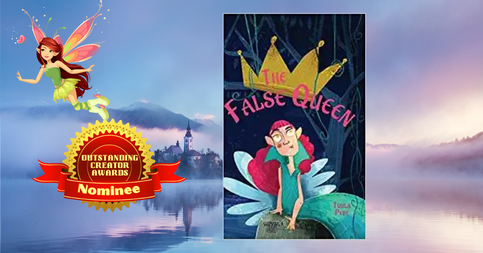
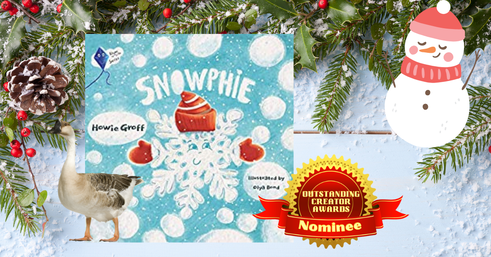
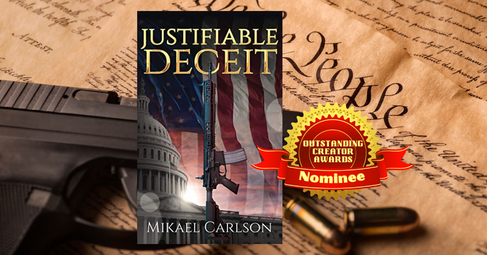
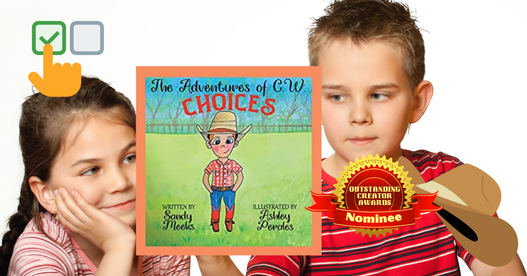
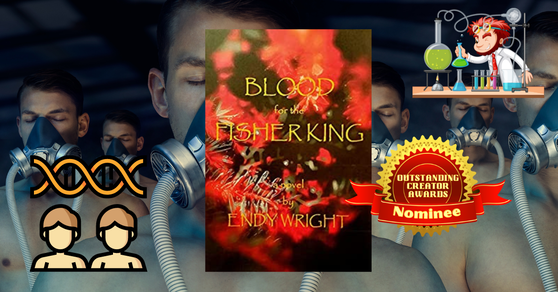
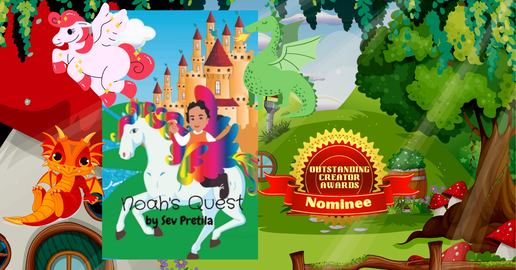
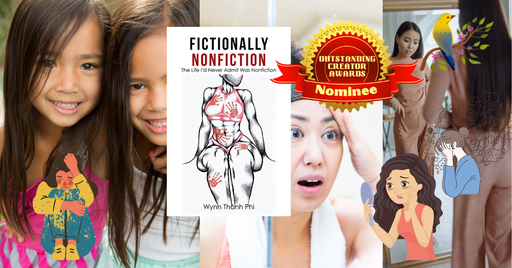
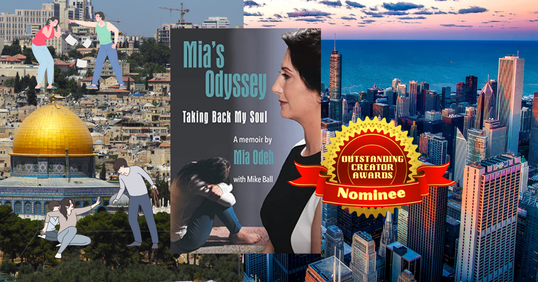
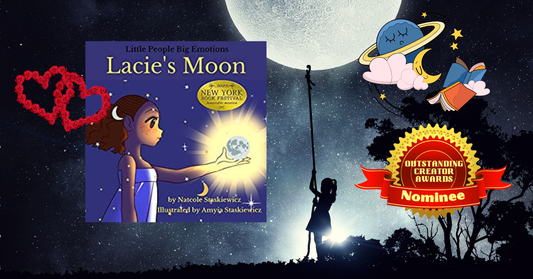
 RSS Feed
RSS Feed